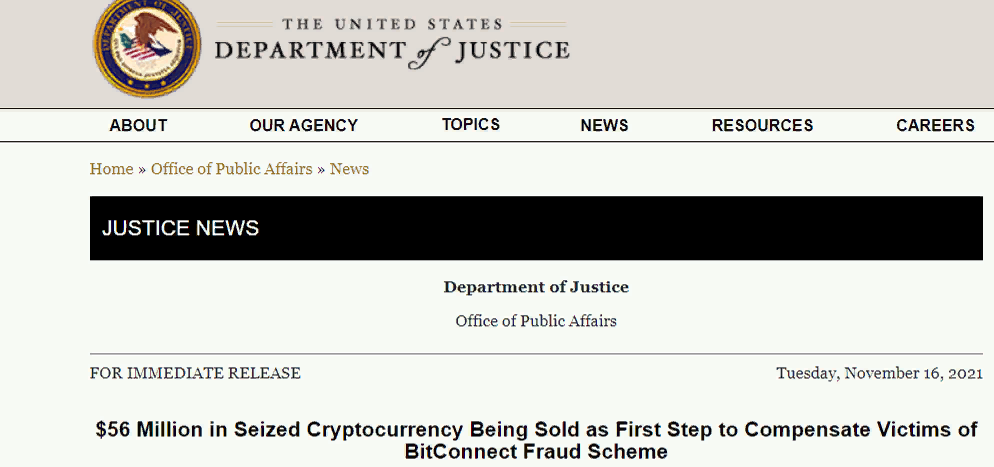Those who don’t study history are doomed to repeat it. The long and dramatic story of one of the largest cryptocurrency scams is finally over, so let’s try to learn something from it.
In 2017 the entire world was first exposed to blockchain technology and cryptocurrencies. But it wasn’t just regular users, businessmen, and developers – financial fraudsters were also impressed by the opportunities opening up. It is therefore unsurprising that 2017 is also remembered as the year of numerous crypto scams, as well as schemes that capitalized on the mass excitement.
Fraud evolves just like everything else in this world. In 2017, when crypto cons were only beginning to spread, scammers were also, let’s say, unrefined. In most cases, they took the standard fiat money schemes and replicated them with cryptocurrencies, since back then it was much easier to pass off the old for the new. (Largely because of the youth and lack of life experience of the overwhelming majority of “crypto bros”.)
One of the groups taking this approach was the BitConnect scam project. Although, in fairness, it is worth noting that this scheme was launched back in 2016, as if the creators foresaw a cryptocurrency fever that really swept the planet only a year later.
BitConnect users were offered to purchase BCC tokens and place them in the service system at interest to receive passive income in the future. The company introduced a multi-level referral system to attract new clients, which made it look even more like a classic financial pyramid, only based on cryptocurrency.
As the US Securities and Exchange Commission (SEC) later reported, the BitConnect platform raised a total of $ 2 billion, promising investors that their software would generate incredibly high returns from cryptocurrency trading. Also, according to the department, project managers instilled in people that crypto investment is easy and simple – at that point (2016 – 2018), the level of awareness among ordinary users was very low.
Now the US Department of Justice confirms that it was a scam, a textbook Ponzi scheme where new investors’ money is used to pay back those previously invested in a project. BitConnect clients willingly or unwittingly participated in a financial pyramid. The scheme let them in on a share of the funds for persuading others to invest in the platform with promises of high returns. But in reality, the project was conceived as a fraud from the outset and only offered unregistered securities in the form of tokens.
So far, the investigation has concluded that the “brains” behind the entire BitConnect scam was a certain Satish Kumbhani, still at large. Glenn Arcaro handled direct organizational work and ended up getting arrested as a result. He has already pleaded guilty, and in September, the court ordered him to pay the scam victims $ 24 million.
However, that is not exactly how the process is going to go. The US Department of Justice is currently preparing to pay compensation to the targets of the BitConnect fraud by selling the confiscated cryptocurrency, worth an estimated $ 56 million. Their statement notes: the Department of Justice will auction off digital assets, with the proceeds then used as compensation. The US government has already set up a website for BitConnect victims.

The amount of compensation for each person will be determined by the court – and this is not the money that Glenn Arcaro must reimburse; it is a different ruling. Interestingly, during a September trial, Arcaro pleaded guilty to a large-scale conspiracy, called himself the “number one promoter” of BitConnect, and voluntarily handed over all the crypto he had to the bailiffs. Naturally, the sum turned out to be many times less than the stolen $ 2 billion. The court convicted him on charges of embezzling American investors’ money. Now the hapless manager faces up to 20 years in prison, the verdict expected to be handed down on January 7, 2022.
As has already been mentioned, Satish Kumbhani, accused of fraud in connection with the misappropriating bitcoins received from investors worldwide, stays on the wanted list. According to the SEC experts, he withdrew part of the bitcoins for personal use and distributed the other part among promoters who helped him with fundraising. At the time of the alleged creation of the scheme, Kumbhani lived in India, but his current whereabouts are unknown.
Of course, this is far from the most significant modern cryptocurrency scam. But the United States has rather tight financial controls, so according to the Justice Department, BitConnect has become the largest cryptocurrency scam in US history.
Since that time, fraudulent schemes have become much more complex and advanced, but it’s important to remember that many are based on the same simple principle as BitConnect, with all sorts of bells and whistles on top of it. The key word is still “greed”.



